If you’ve ever dreamt of wide-open spaces, challenging terrain, and the thrill of a successful hunt, then Montana antelope hunting might just be your calling. Get to experience the vast Montana prairie, free from worries, with your heart racing in anticipation of the quest for antelope.
In this guide, we’ll delve into the heart of DIY Montana antelope hunting, uncovering 9 essential tips to help you navigate the vast landscapes, understand the behavior of these magnificent creatures, and ultimately enhance your chances of a rewarding and memorable hunting experience.
Although seasoned hunters may feel like natural antelope whisperers, this article holds something for everyone. It will include everything from choosing the right hunting gear and strategies for locating antelope to navigating Montana’s vast prairies and following the ethical and regulatory guidelines.
- Related article: Hunting Antelope in Montana
So, gear up, embrace the spirit of adventure, and let’s embark on a journey into the wilds of Montana, where the pursuit of antelope awaits!
7 Key Takeaways on DIY Montana Antelope Hunting
- Choose a weapon with a good range and accuracy, and dress in layers for unpredictable weather.
- Study Montana’s landscape, learn antelope behavior and understand the state’s specific antelope hunting rules.
- Always have the right hunting permits and practice being as quiet and still as possible.
- Regularly practice shooting at various distances and angles, and always prioritize ethical and humane hunting practices.
- Familiarize yourself with Montana hunting regulations and local hunting areas.
- Use hunting strategies like glassing and anticipation of the weather, and invest time in terrain scouting.
- Dress in layers and pack for varying conditions, as Montana’s weather can change rapidly.
DIY Montana Antelope Hunting Tips
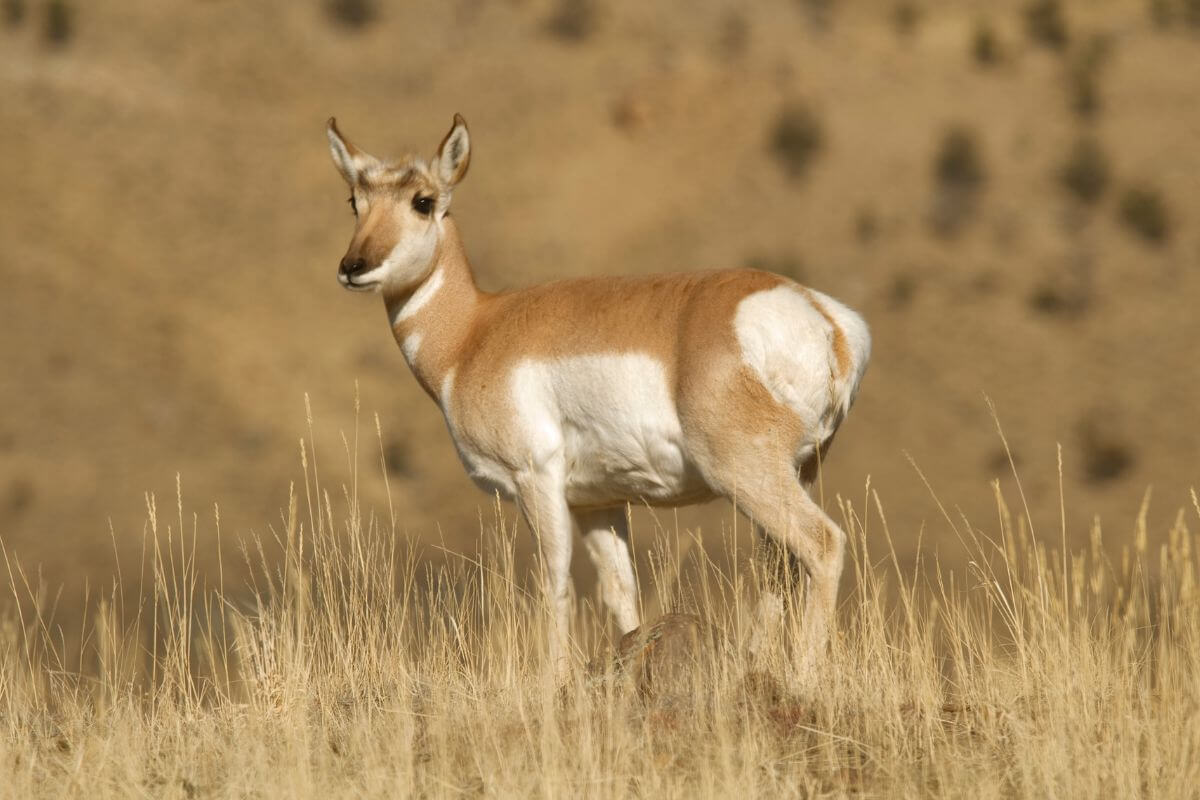
Montana offers some of the best antelope hunting opportunities in the country, and for DIY hunters, it can be an exciting and rewarding experience. From scouting the perfect hunting spot to navigating the challenging terrain, there are several tips and strategies to keep in mind when embarking on a DIY Montana antelope hunting trip.
Whether you’re a seasoned hunter or new to the sport, these hunting tips will help you make the most of your time in Big Sky Country. Keep reading for some valuable insights and advice on how to have a successful and memorable antelope-hunting adventure in Montana.
1. Research and Plan
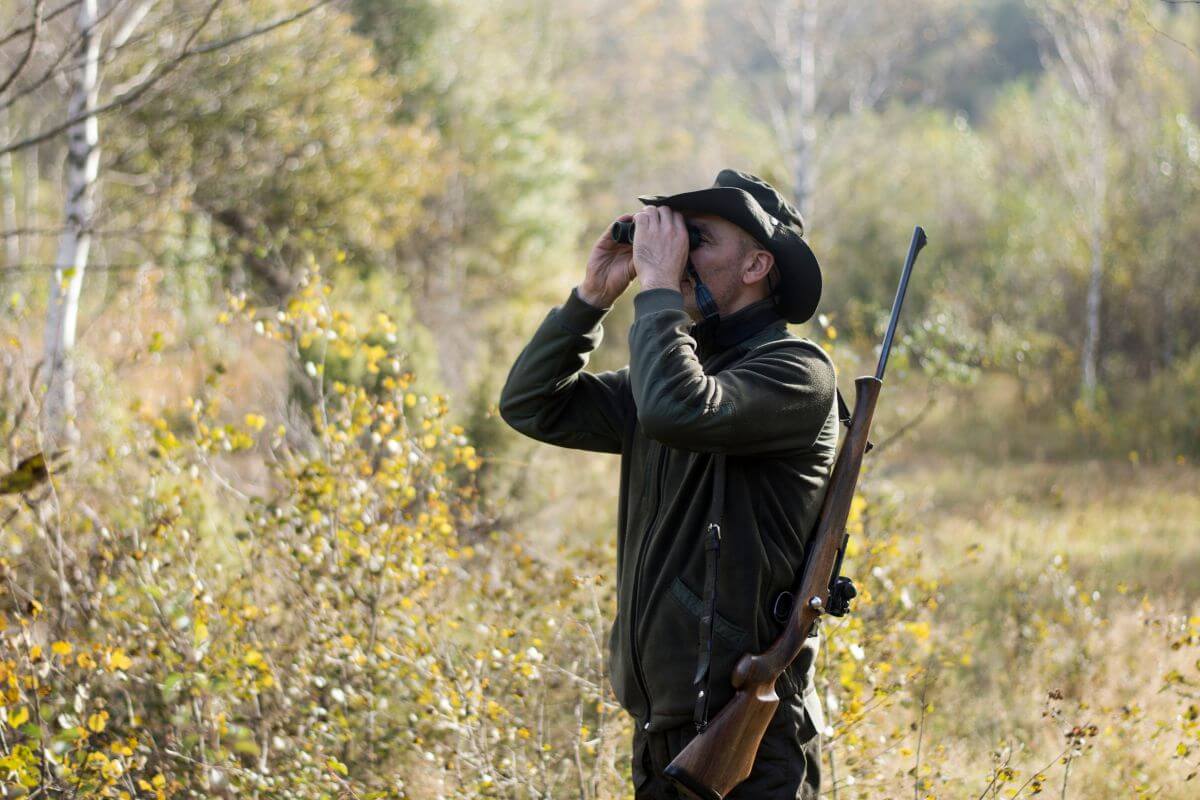
Before heading out on a pronghorn hunt in Montana, it’s crucial to do some research and planning. With these tips, you can make the most out of your pronghorn hunt in Montana and increase your chances of a successful and memorable hunting experience:
- Familiarize yourself with Montana’s hunting regulations, seasons, and antelope hunting specifics.
- Study hunting areas, including public and private land access.
- Gather intel on antelope habits and migration patterns.
It’s worth noting that Montana is an opportunity-rich state for hunters, especially bow hunters. One unique archery hunt available to anyone is the 900-series antelope tag. This either-sex archery-only tag is valid for most of the state and runs from August 15th through early November.
To obtain this tag, an application is required. However, for both residents and non-residents, the chances of being selected have been 100% for the past four years, making it nearly guaranteed. In case you miss the application deadline, any available leftover tags can be purchased on a first-come-first-serve basis, usually in August.
Ultimately, the success of your pronghorn hunt in Montana depends on how well you plan and prepare for it, much like a well-played chess game. So, put on your thinking cap, delve into the hunting regulations, and start drafting your game plan.
2. Choose the Right Hunting Gear
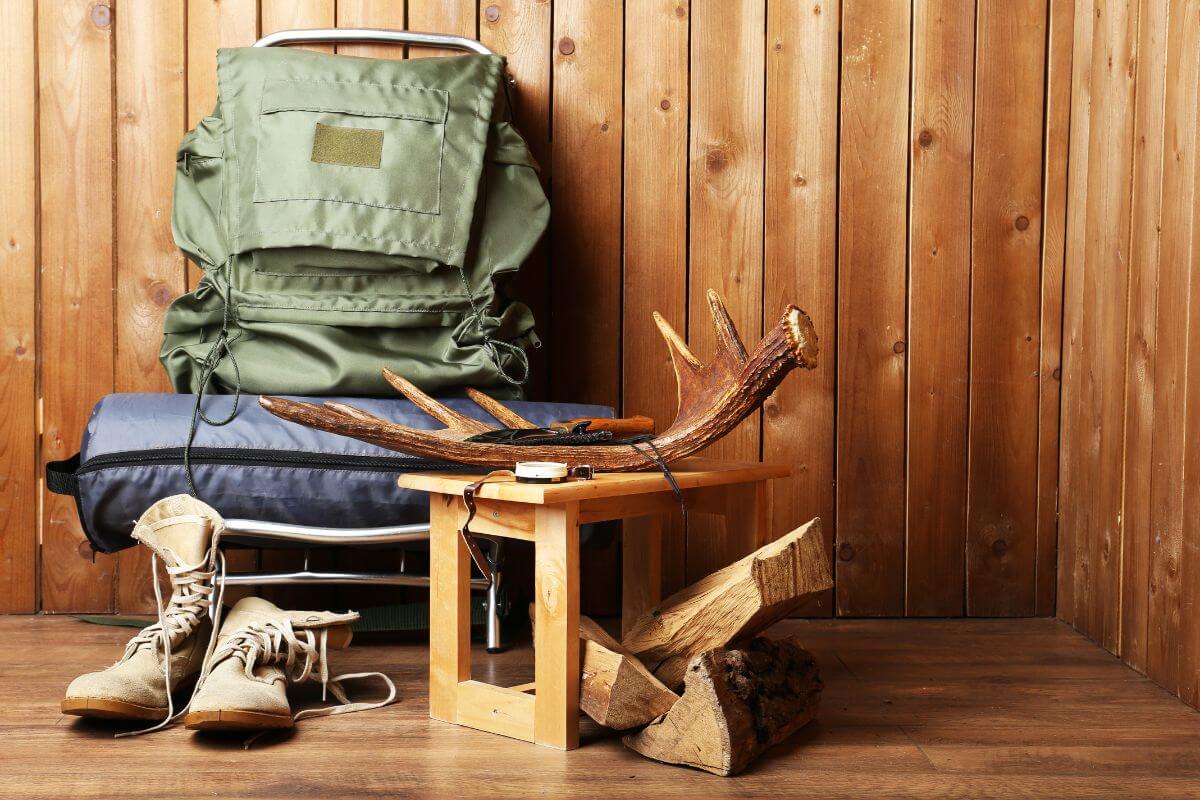
Your comfort and success on an antelope-hunting trip in Montana demand the right gear. Here’s a rundown of the gear essentials and why they matter:
- High-quality Optics – You’ll spend a lot of time behind glass, so invest in a good set of binoculars and a spotting scope. This gear is your window to the prairie, helping you spot antelopes from a distance and assess their size and horns.
- Rangefinder – Antelope hunting usually happens on wide-open prairies where distances can be deceptive. Precision in range measurement is key to making an ethical shot without putting down a false target.
- Comfortable Clothing and Hunter Orange – Comfortable, durable clothes and a hunter orange vest or cap for visibility to others in the field are crucial.
- Reliable Backpack – Your pack should be light, with room for food, water, and essential supplies, aiding your mobility and range.
- Cooler – To preserve your prized antelope meat and avoid spoilage, keep a cooler on hand. Familiarize yourself with field dressing to get the meat packed and cooled as soon as possible.
- Knee Pads and Gloves – Crawling through hard ground and cactus patches can be tough on the joints and hands, so these are major boons for comfort and safety.
- Complementary Gear – Emergency whistle, personal locator beacon, basic first-aid kit, and a knife. Each piece is a safety net in case of unforeseen events.
Don’t just tick the gear off your list; understand its role in the hunt. So when you’re spending hours behind glass or crawling on your knees over uneven terrain, it’s the gear that keeps you comfortable, safe, and accurate. Go ahead, gear up your safari, and increase your hunting odds effortlessly.
3. Practice Your Chosen Hunting Weapon
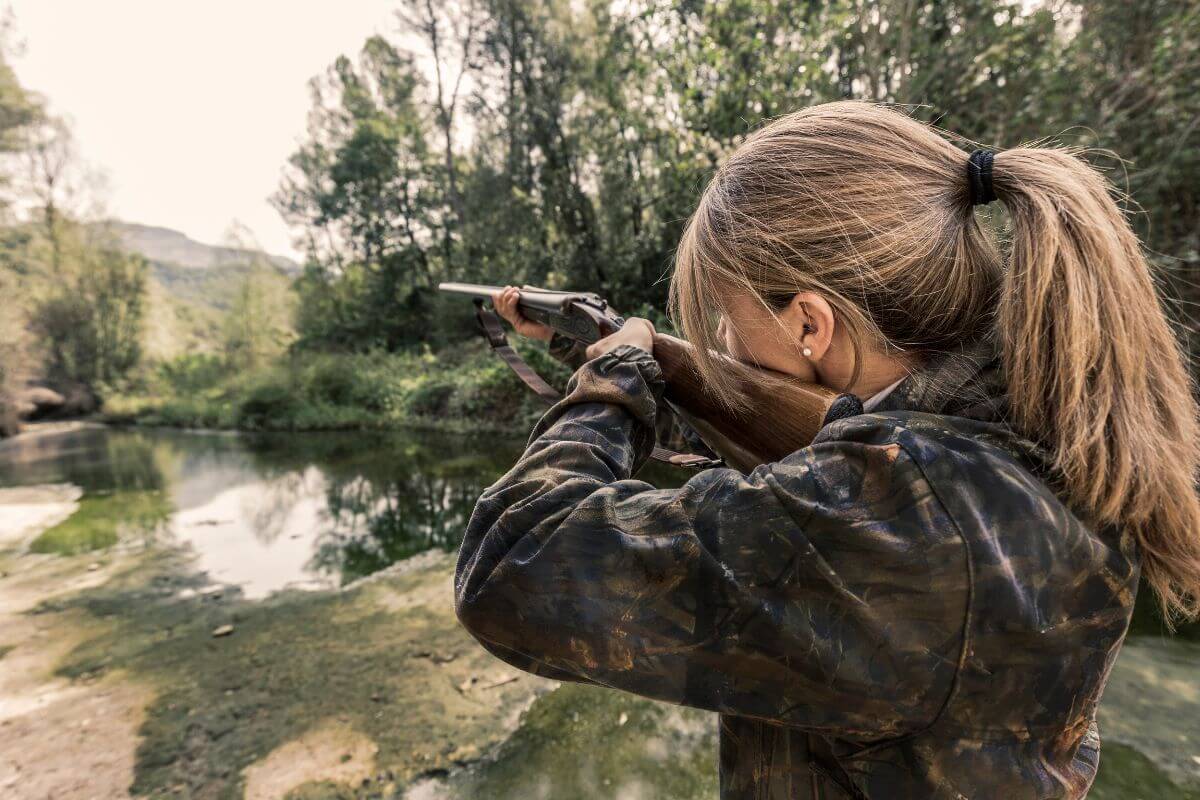
Once you’ve got your weapon of choice, like a trusty rifle, it’s crucial to practice. Think ready, aim, fire, in a safe and legal setting, of course.
American pronghorn, the game you’re after, are generally smaller and live in wide-open spaces. To increase your chances of success, consider a rifle caliber and ammunition known for their flat trajectory. This setup is great for those distances where pronghorns are often found.
To practice effectively using your chosen hunting weapon:
- Sighting In – Ensure your rifle is properly sighted in for precision.
- Varying Distances – Get comfortable shooting at different ranges.
- Aiming Techniques – Practice different positions and use of accessories, as well as studying with a seasoned marksman.
- Familiarize with Your Weapon – Besides just shooting, become accustomed to its capabilities and limitations.
- Safety Comes First – Proper handling and shooting techniques yield better results.
Another thing, antelope covers lots of ground in open areas. To match the chase and pace, build up your endurance and tweak your ability to navigate different terrains through physical conditioning. You’re not just hunting; you’re embarking on an adventure.
There’s nothing more exhilarating than hitting your target after a long stalk. And who knows, with the right practice, the dinner table might just thank you.
4. Go With a Seasoned Hunter
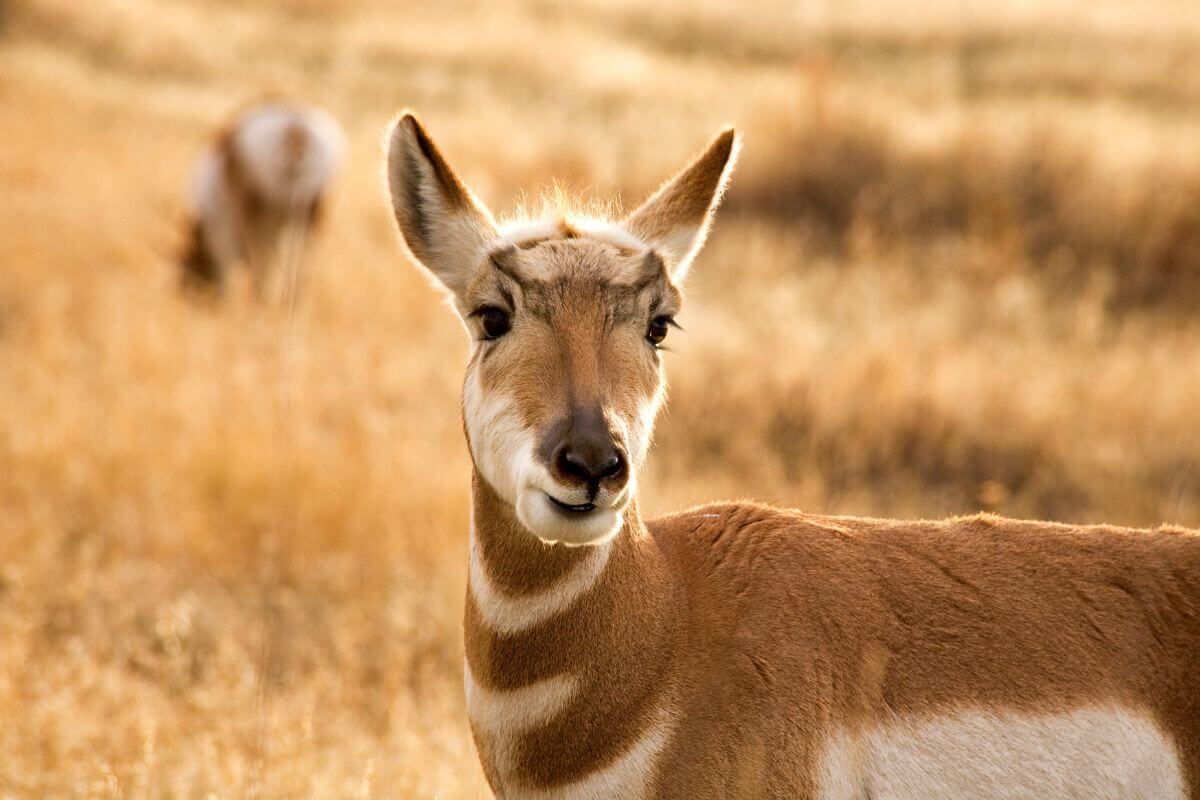
Hunting down an antelope isn’t like picking out a cow in a field. The seasoned hunter knows the tricks. They can tell how far away the antelope is, where they’re most likely to travel, and how to adapt to changing weather.
Why Choose Going With a Seasoned Hunter When Hunting DIY:
- Accurate Antelope Spotting – You might miss the camouflaged antelope, especially on overcast days.
- Strategic Decision-Making – Hunters with experience know the best moves, ensuring a more fruitful hunt.
- Safe and Legal – They know the lay of the land and can guide you to shoot where it’s legal and humane.
How to Find a Seasoned Hunter:
- Local Hunting Clubs – Great place to look for seasoned hunters with a wealth of local knowledge.
- Sporting Goods Stores – Employees often have ties to the hunting community.
- Social Media and Online Forums – You can connect with experienced hunters in your area.
But heed this reality — if you’ve never even seen an antelope, you’ll find them hard to spot and even harder to judge, especially in inclement weather. A mentor can be a real-life cheat code, sharing wisdom on approach strategy, shot placement, and the most effective lead distances.
5. Scout the Area
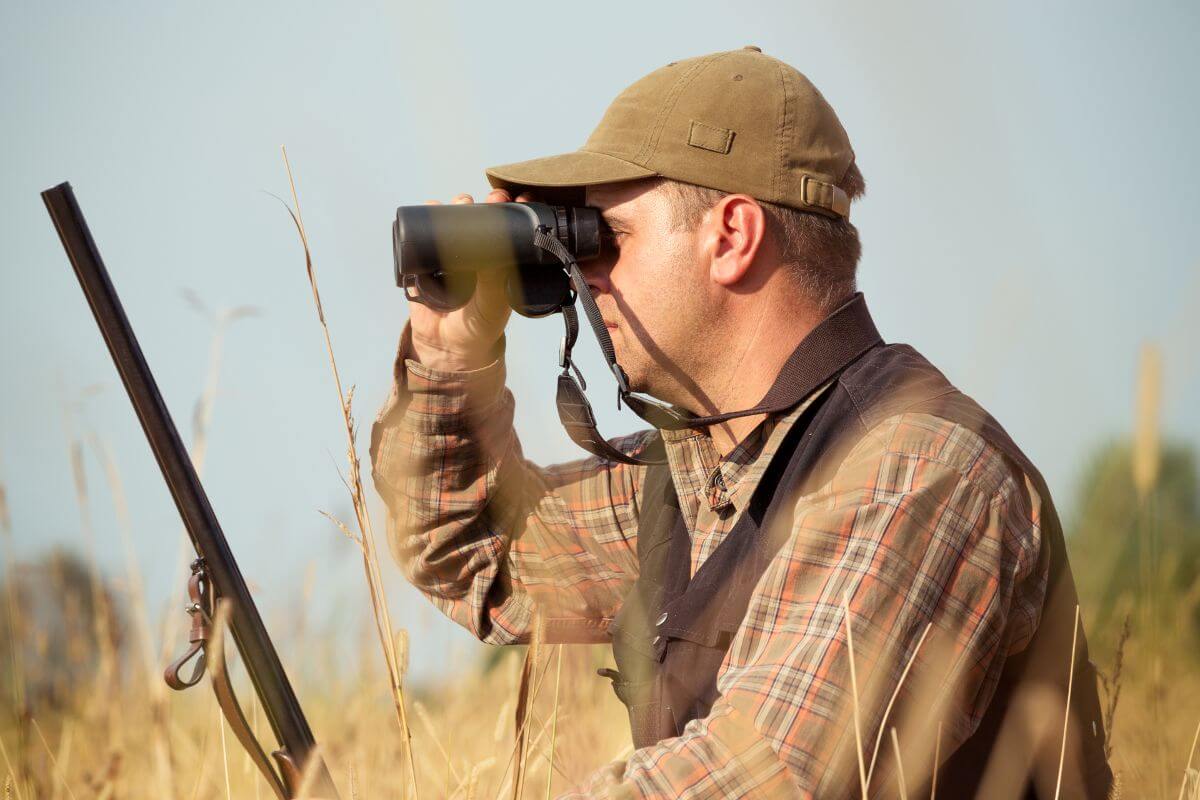
Before you hit the prairie for your antelope hunt, invest some time into scouting the terrain. This isn’t just a casual jaunt; we’re talking about observing water sources, key feeding spots, and travel routes. Identifying these areas will give you a considerable edge once you’re in hunting mode.
Be sure to pack some high-quality binoculars to survey the land from a distance. This will help you avoid spooking the animals and give you a sense of where best to position yourself.
Also, take note of the terrain – antelopes are quite selective about their habitat. Scan for potential blinds or stalk routes that you can use when the time comes to make your move.
Lastly and most importantly, invest at least a couple of days in dedicated scouting. Trust me, these two days can potentially save you from five uneventful ones in your blind.
I learned this the hard way, you don’t want to be caught unprepared. Antelope hunting is no walk in the park, or in this case, the plain. You’ve got to be smart and make the best use of your time. It’s amazing how a bit of prior scouting can turn a “meh” hunting experience into an unforgettable harvest.
6. Employ Effective Hunting Strategies
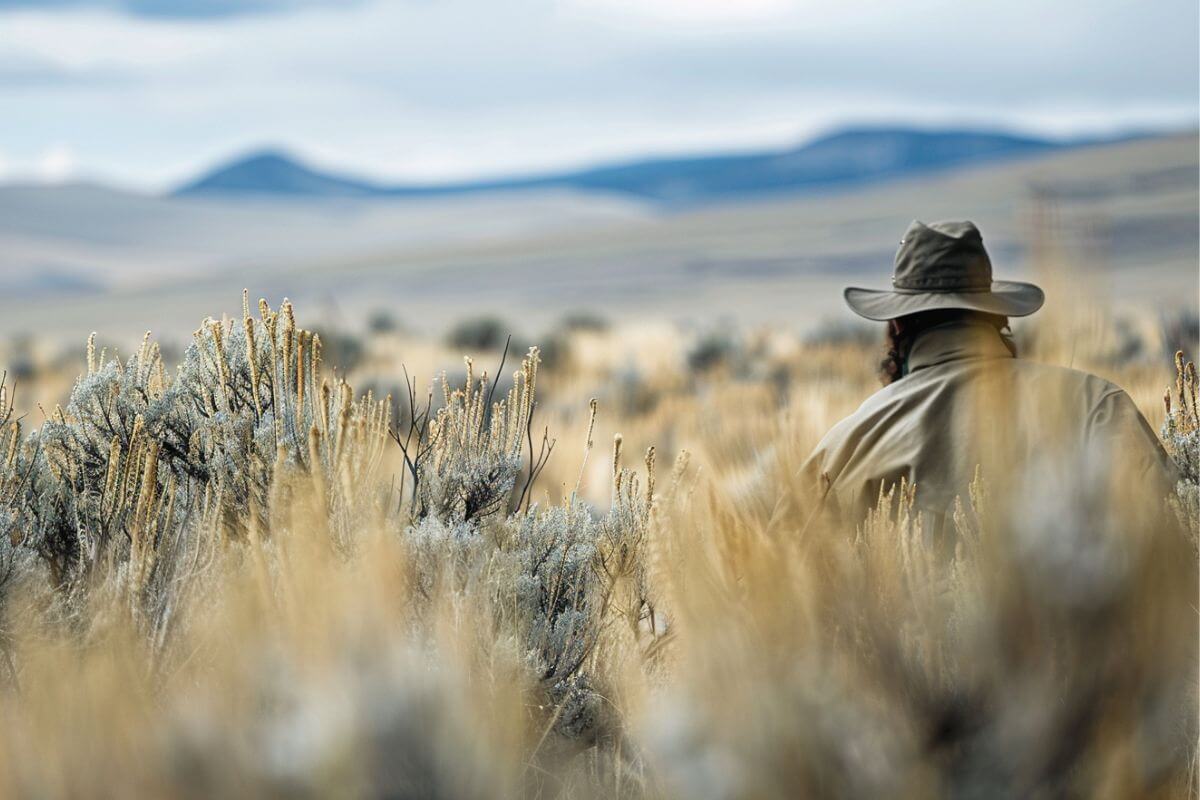
Pronghorn, known for their razor-sharp instincts, with their exceptional eyesight and cautious nature makes them masters of evasion. So, how do you outsmart something that can spot you from miles away?
Here are some hunting strategies you can employ during a DIY Montana Antelope Hunting:
- Get Smart with Glassing – Use binoculars to scan areas miles away. This technique, called “glassing,” lets you spot antelope from a safe distance, giving you a head start on the stalking process.
- Wind and Weather – Use these to your advantage. Pronghorns may have elite eyesight, but they’re not invincible. A strategically timed stalk during a stiff breeze can cover the sound you make.
- Ambushing by Water – Pronghorns visit water holes regularly, especially during hot afternoons. Set up a concealed position near a known water source.
- Use of Antelope Decoys – When used cleverly, antelope decoys can be an ace up your sleeve. As social and curious creatures, real antelope might check out your decoy, giving you the perfect shot.
- Stay Hidden – Utilize the natural cover features of the terrain you’re hunting in: coulees, hillsides, or a clump of sagebrush can be invaluable. Rolling hills and ridges also provide vital cover.
- Choose the Right Optics – Beware of sunlight flashes against your optics when hunting in the open country on sunny days. Shield the objective lenses of your binoculars, rifle scope, or spotting scopes with a cap or clothing when pointing them toward the sun.
- Be Patient – Take your time and make sure to have eyes on your target before making a move. Rushing towards an antelope for a shot will likely scare it away.
Remember, hunting an antelope isn’t about a guaranteed hit. Their vitals area is relatively small, so it’s normal to miss, even for seasoned hunters. The key is not to get discouraged.
After all, every missed shot hones your skills for the next one. So stay patient, keep learning, and enjoy the challenge. The thrill of the hunt is as much in the chase as it is in the shot.
7. Prepare for Unpredictable Weather Conditions
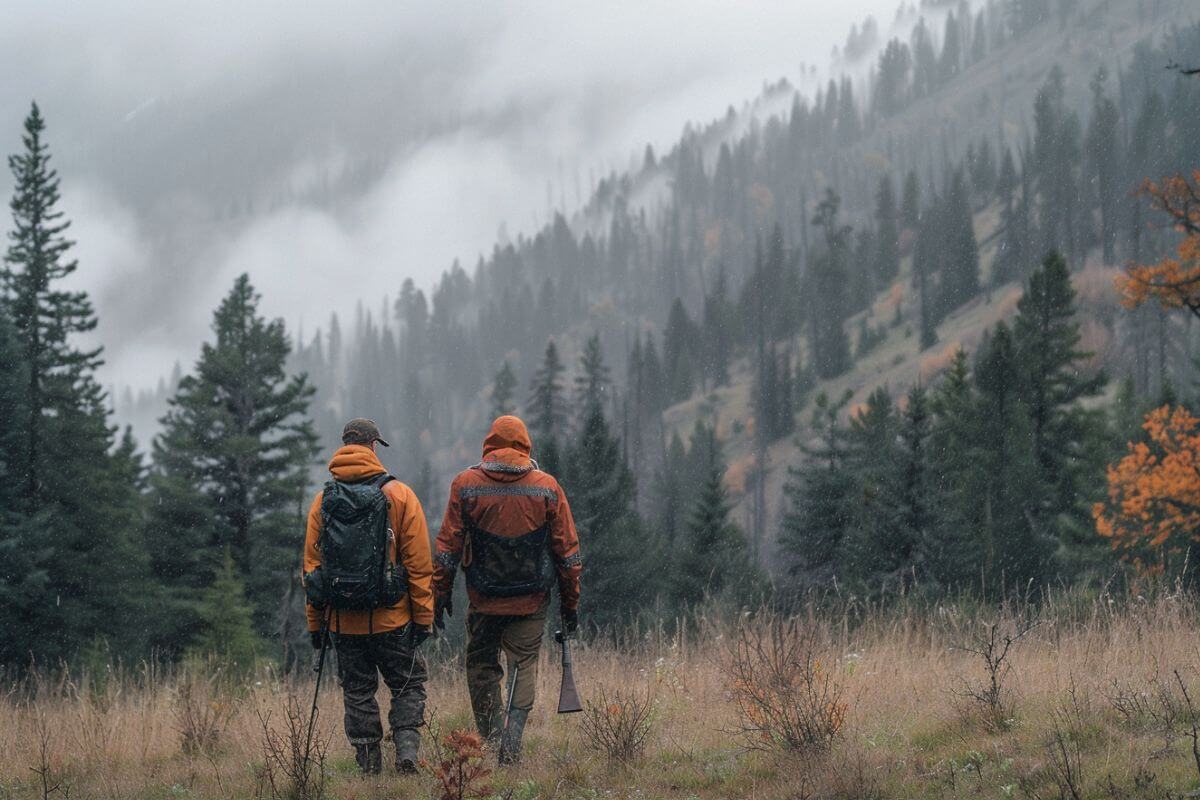
Montana is a fabulous mixed bag when it comes to weather. In particular, since rifle season opens in October, you might encounter warm summer-like temperatures one day, only to face cold and snow the next. Being prepared for both extremes will make your hunting trip much more enjoyable and comfortable.
Here’s the deal — layers are your new best friend! Here is a list of tips to be weather-ready in Montana:
- Dress in layers, wear breathable clothes, and pack a sturdy rain jacket.
- Bring warm gloves, a hat, and thermals.
- Opt for hunting boots with good traction to handle slippery conditions.
- Don’t just check the forecast, be ready for anything!
My go-to attire usually includes a moisture-wicking base layer, a flannel-lined shirt, and a padded vest. Pair it with waterproof and breathable hiking boots, a wide-brimmed hat, and shooting gloves to keep my fingers nimble when pulling the trigger.
Weather is unpredictable – embrace it by preparing for the whole shebang. After all, nothing says adventure like a hunt in Montana’s changeable weather!

Apart from your hunting gear, navigation tools are next in line on your must-pack list. Take it from me, having the right maps, a GPS device, or a hunting app for your smartphone is a simple yet vital step to a successful antelope hunting trip. Time spent getting lost is time away from the game, literally!
Understanding the local landmarks and terrain features can be your ace in the hole. I’ve found that not all antelope habitats are created equal, so knowing where they usually roam with the area’s landmarks can be a game-changer.
Remember, spotting an antelope from a distance is one thing; knowing how to maneuver to close in for the perfect shot is another entirely.
Your Navigation Checklist:
- Reliable Maps – Don’t skimp on maps; invest in accurate, up-to-date ones.
- GPS Device or Hunting App – Make sure you have a reliable way to track your location.
- Study the Terrain – Whether it’s online research or talking to local experts, knowing the lay of the land is crucial.
A pro tip? Prepare for the worst-case scenario. Yes, it sounds a bit dramatic, but a reliable compass can be a lifesaver if your technology fails. It’s better to have it and not need it than the other way around. So, reduce the chance of finding yourself in dire straits by doubling up on your navigation tools.
Navigation is not just about preventing you from getting lost. It’s about maximizing your time in areas most likely to yield antelope sightings while minimizing any disruption to their natural patterns.
9. Respect Landowners and Regulations
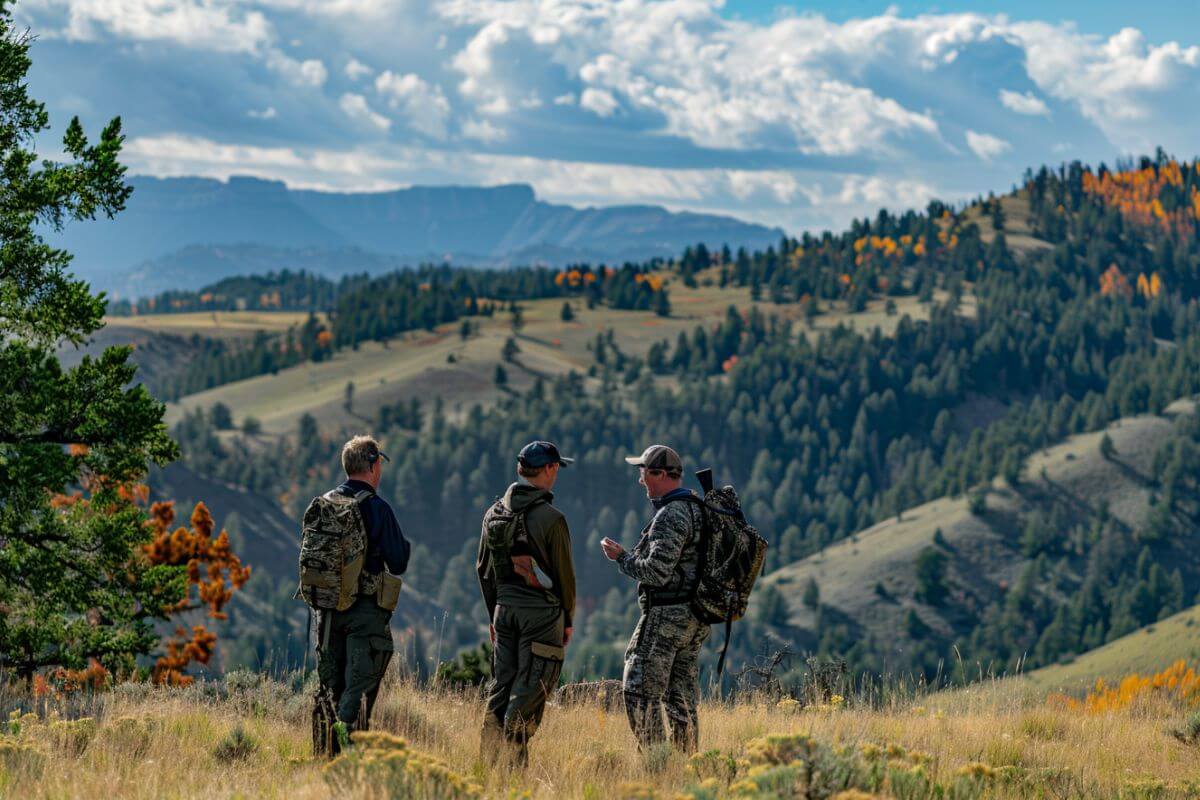
Montana’s Block Management system is a solid gold thing. It’s like a VIP pass to private ranches for hunting. But before you take that shot, you need to knock on the door and ask for permission.
Landowner permission is like the golden rule of antelope hunting on private land: respect the turf, get the nod, and play by the landowner’s rules.
When you get the nod, don’t go disrespecting the house rules. Landowners are the quiet VIPs in Montana’s hunting story. Let’s just say that the only footprints we should be leaving are the ones in the field, not those on the private property of honest-to-the-soil folks.
DIY Montana Antelope Hunting Final Thoughts
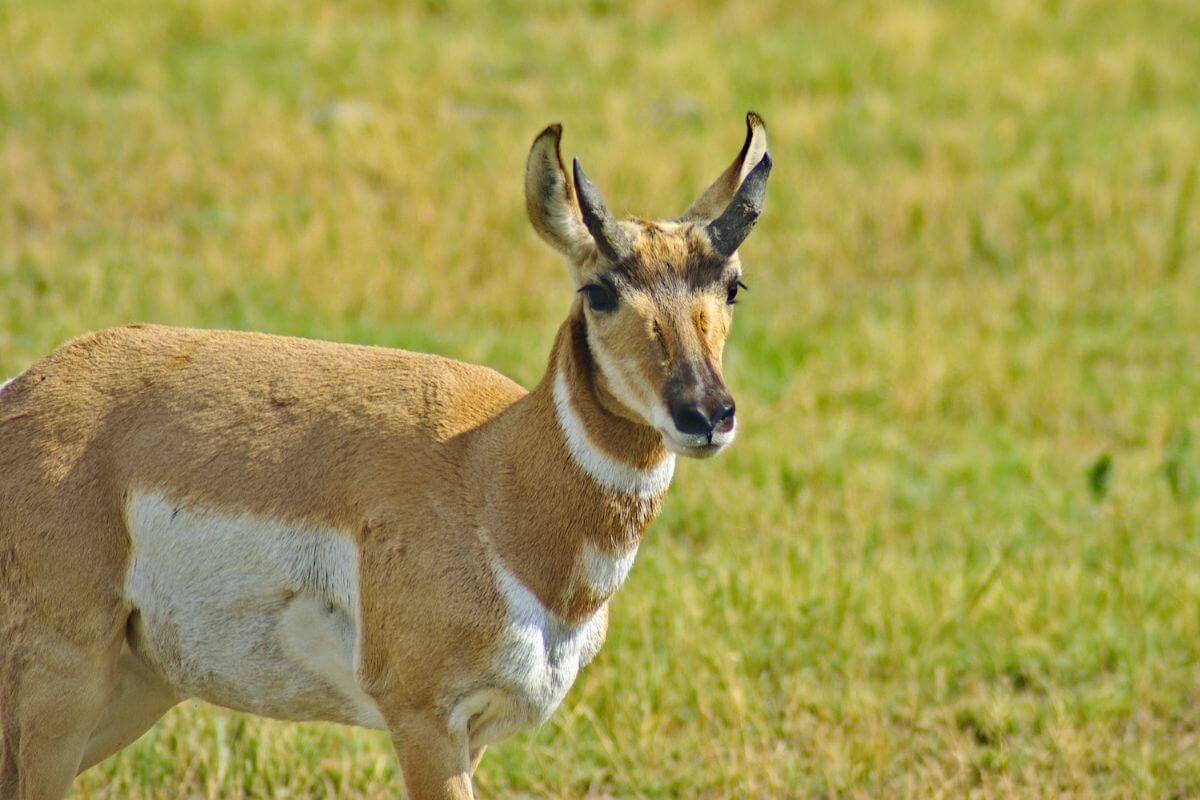
Embarking on a DIY antelope hunting adventure in Montana presents an exhilarating opportunity to immerse yourself in the state’s rich natural beauty while honing your hunting skills.
Before you set out to hunt antelope, remember that a successful hunt requires careful planning, preparation, and ethical conduct. Dress for Montana’s ever-changing weather, honing your shooting skills, and deploying stealth tactics will all enhance your chances of a rewarding hunt.
It’s crucial to embrace ethical hunting practices and always operate within the regulatory framework when pursuing your passion in Montana’s great outdoors. Each hunting trip should not only offer the thrill of the chase but also deepen your connection with nature and respect for the wildlife you’re pursuing.
So, as you trail the open plains of Montana in pursuit of the elusive pronghorn, let the final shot never overshadow the rich experiences and valuable lessons each hunt has to offer. Enjoy your time in Big Sky Country, immerse yourself in the beauty, and leave only with cherished memories and, perhaps, a prized antelope harvest.
DIY Montana Antelope Hunting FAQs
1. How Hard Is It to Get an Antelope Tag in Montana?
Getting an antelope tag in Montana can vary depending on the specific hunting district and the demand for tags, but generally, it is considered easier compared to some other big-game species, with opportunities available through both general and limited-draw tags.
2. Can You Buy Antelope Tags Over the Counter in Montana?
Montana offers over-the-counter (OTC) antelope tags for both residents and non-residents in certain hunting districts, making it relatively accessible for hunters without the need for a draw or lottery system. Availability depends on the specific hunting district and tag quota.
3. Where Is the Best Place to Hunt Antelope in Montana?
Determining the best place to hunt antelope in Montana depends on factors like the specific hunting district, private or public land access, and current population densities. Places such as Bob Marshall and Selway-Bitterroot Wilderness are known for good antelope hunting opportunities.
4. What State Has the Best DIY Antelope?
Wyoming is often considered one of the best states for a DIY (Do It Yourself) antelope hunt due to its abundant antelope populations, a mix of public and accessible private lands, and relatively favorable tag availability for non-residents.
5. Which U.S. State Has the Highest Antelope Population?
Wyoming typically has the highest antelope population in the United States, boasting a significant number of these pronghorn animals across its diverse landscapes, including both public and private lands.

